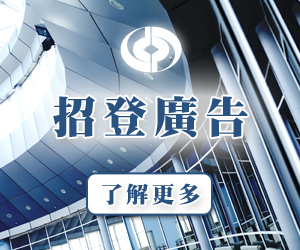Dr Jonathan CHOI Koon-shum (Chairman of the 50th terms of office) September 2018
The participation of Hong Kong’s industrial and commercial sectors in the regional cooperation platform will not only create a more diversified market, but also fully leverage Hong Kong’s strengths to meet our country’s needs.
The leading group for the development of the Guangdong-Hong Kong-Macao Bay Area held its first plenary meeting last month. This was not only innovative institutional arrangements for building the Bay Area, but also set clear direction for planning the region’s development. Based on the principle of “rolling out a measure as soon as it is ready”, the Central Government has already introduced a number of initiatives to promote coordinated development of the Bay Area and to provide greater convenience to mainland-based Hong Kong businesses and citizens. We look forward to more measures to facilitate the flow of key factors in the region and to accelerate the formation of a common quality living circle. It is hoped that in the long run the Bay Area will become a strategic hub for our country’s further reform and open policy and the “Belt and Road Initiative” (B&R).
Glad to see Central Government taking key role to oversee Bay Area development
Planned, deployed and steered personally by President Xi Jinping, the Bay Area is a regional development strategy with a very high starting point. In our view, it is necessary to adopt a new mindset to consolidate the different institutional strengths of Guangdong, Hong Kong and Macau to promote in-depth cooperation among Bay Area cities.
The fact that the Central Government taking the lead to organize the leading group and breaking new grounds in allowing the Chief Executives of Hong Kong and Macau to directly participate in the top-level design fully demonstrates that it attaches great importance to the Bay Area’s development. These arrangements will also help strengthen communication between central ministries and the governments of Guangdong, Hong Kong and Macau so they can draw up specific policy tasks in a concerted manner and flexibly apply their respective institutional strengths to formulate the most ideal macro policy to drive development of the Bay Area.
Facilitation measures to accelerate regional integration
At the leading group’s meeting, Vice-Premier Han Zheng pointed out that the Bay Area should be developed under “four dimensions”, “five strategic positionings” and "six major principles”. He stressed the importance of driving growth with innovation by transforming the Bay Area into an international innovation and technology (I&T) centre as well as a world-class city cluster and quality living circle in line with international standards. It should also provide new impetus for the development of Hong Kong, Macau and the surrounding areas.
The general outline of the region’s overall development is now taking shape. Earlier, the Central Government has rolled out a number of measures to tie in with the Bay Area’s development and specific support measures are in place for Hong Kong citizens studying, working and living in the region. Coinciding with the official opening of the Guangzhou-Shenzhen-Hong Kong Express Rail Link (Hong Kong Section) this month and the opening of various cross-border infrastructure projects going forward, they are set to form a “one-hour living circle” that promises seamless integration of passengers and logistics in the Bay Area.
In addition, the leading group indicated that it will actively explore other measures to further facilitate the free flow of talent, capital and information in the region and achieve “9+2” in-depth integration of the city cluster. On this basis, I hope the leading group can consider launching more facilitation measures, including relaxing the market access conditions for Hong Kong businesses and implementing arrangements, such as “Hong Kong tax for Hong Kong people” and “mutual recognition of professional qualifications”, in order to attract more Hong Kong professionals to the Bay Area for business and employment. It can also consider developing more Hong Kong-style hospitals and schools in major cities of the Bay Area. Other possibilities include building a world-class experimental zone for medical care by collaborating with Hong Kong’s top medical and tertiary institutions to enhance professional training and international recognition of medical staff to provide better medical services to residents of the Bay Area.
In a nutshell, the participation of Hong Kong’s industrial and commercial sectors in the regional cooperation platform will not only create a more diversified market, but also fully leverage Hong Kong’s strengths to meet our country’s needs. As mentioned by guest speakers from the fields of politics, business and education at the “CGCC World Chinese Entrepreneurs Summit” held last month, the Bay Area has multiple industrial strengths and thus has an important role to play in driving national economic growth; whereas Hong Kong and Macau, with their unique advantages under the “One Country, Two Systems” principle, especially Hong Kong’s strong ties with international markets, can provide an important opportunity for the Bay Area to align with the B&R and tap the global market. I hope Hong Kong can capture these opportunities presented by the Bay Area and actively integrates with national development. It will create more growth drivers for the economies of both the country and Hong Kong.




